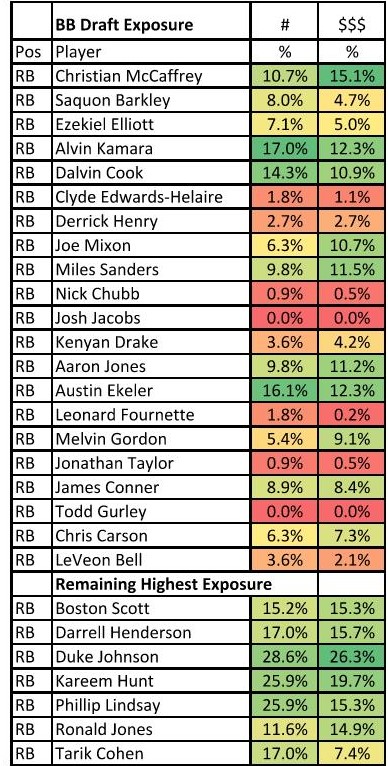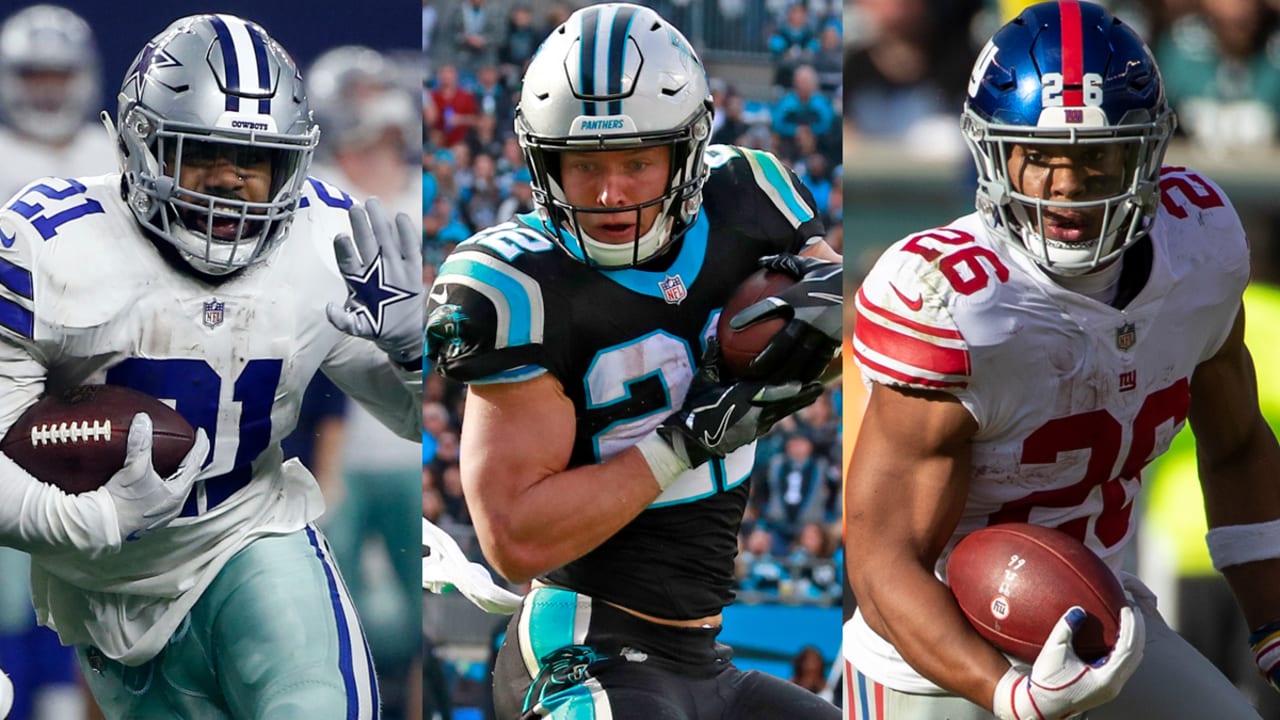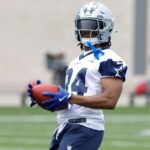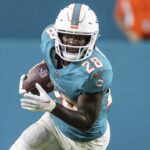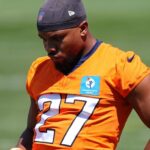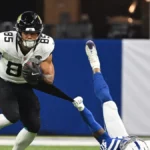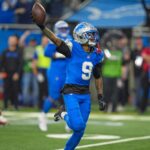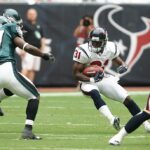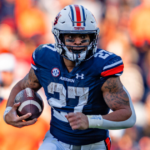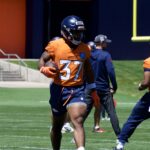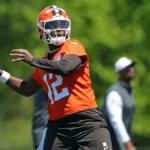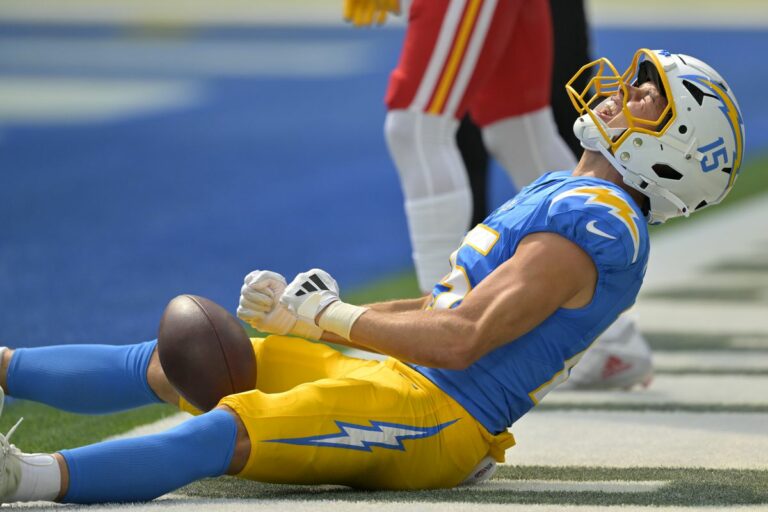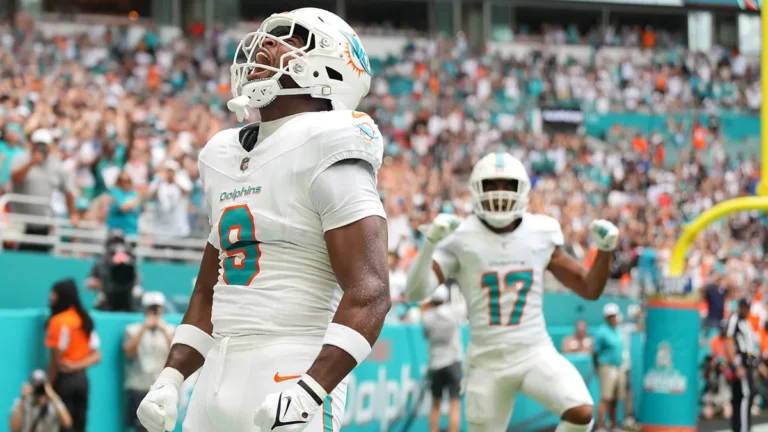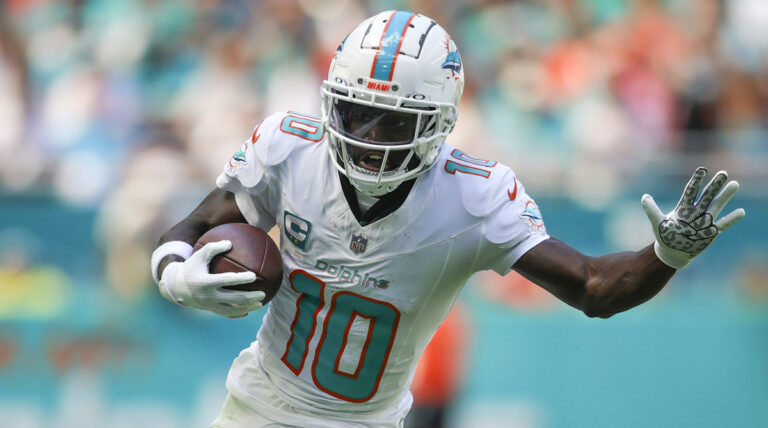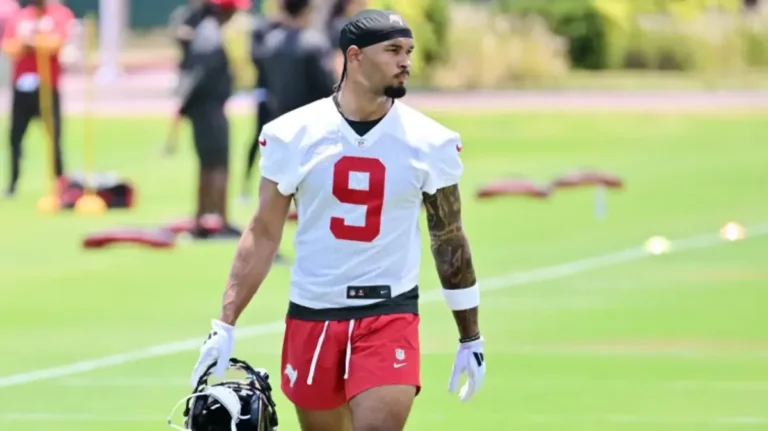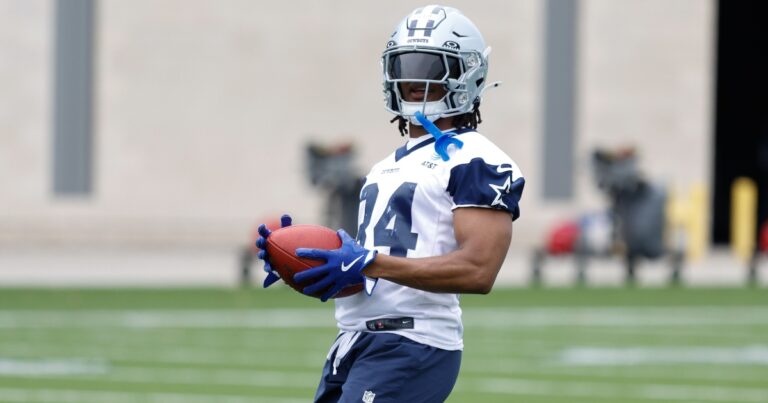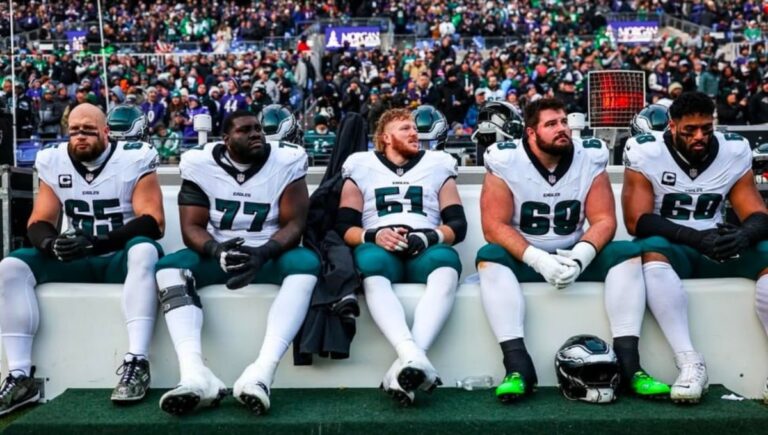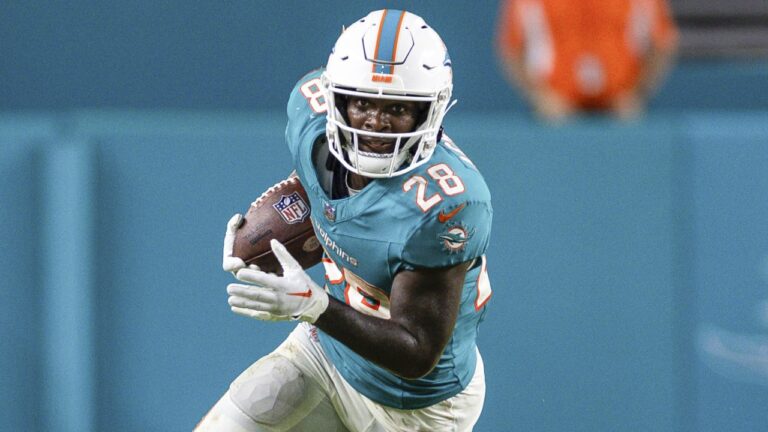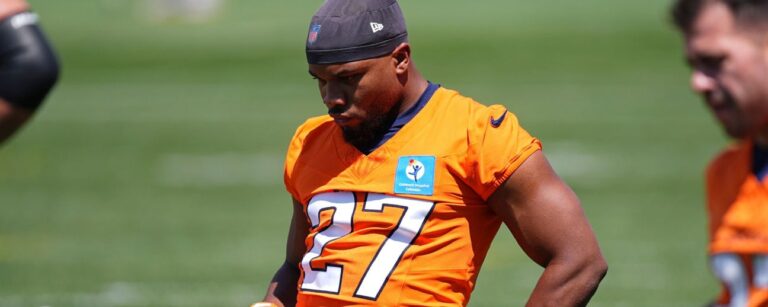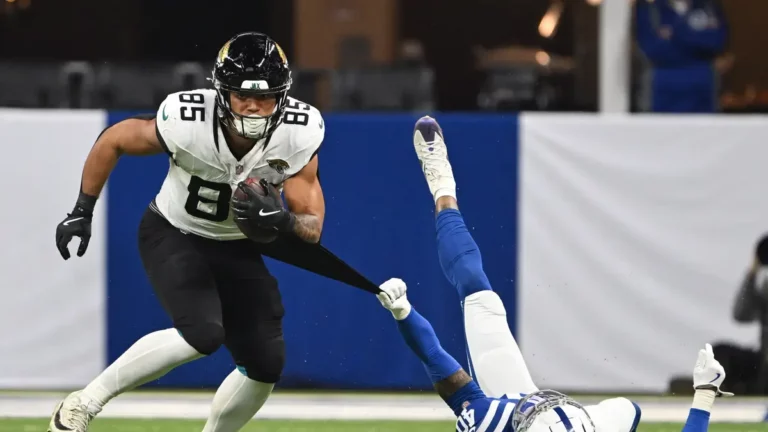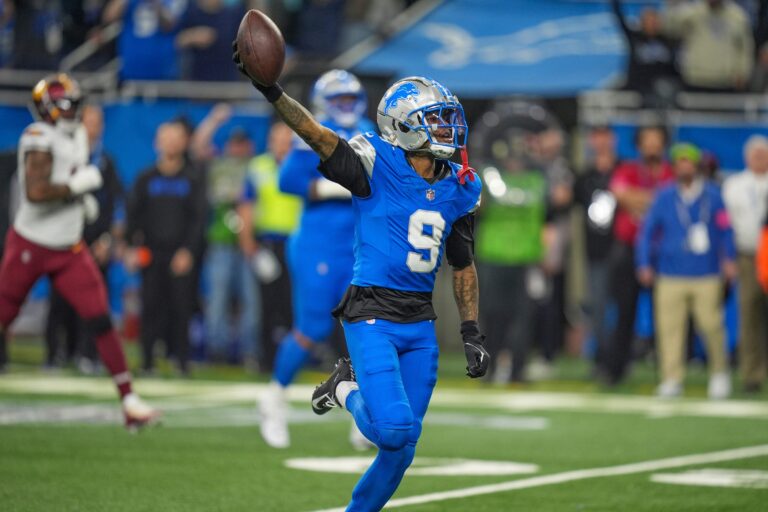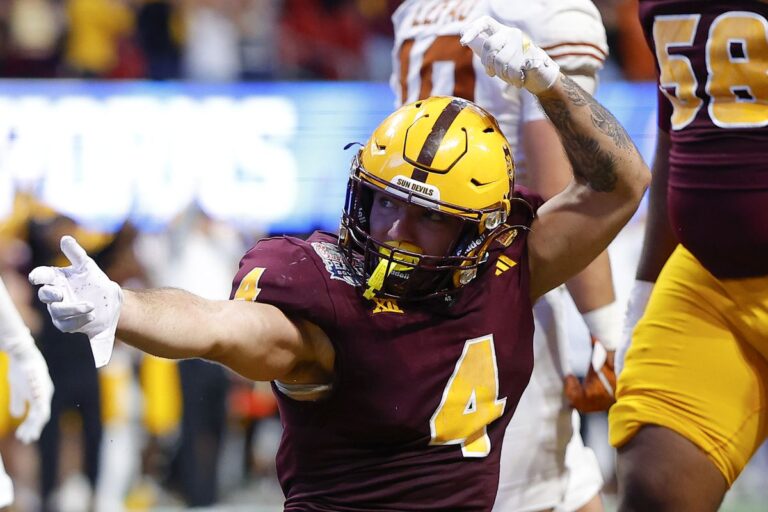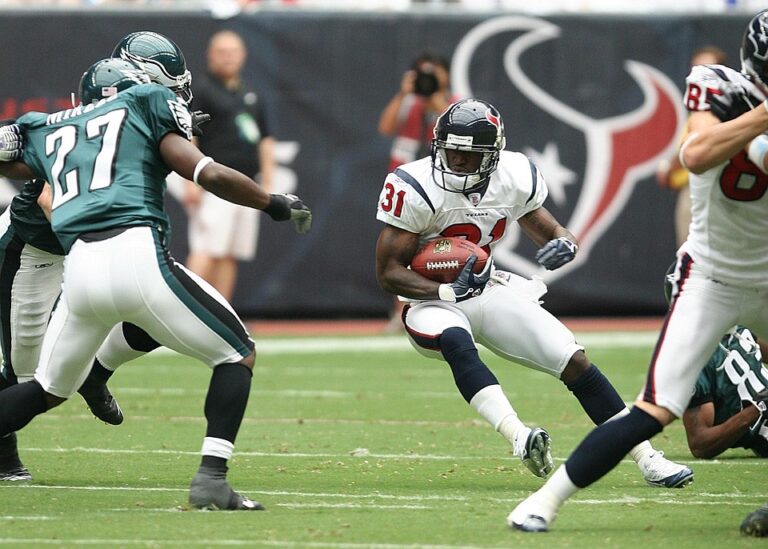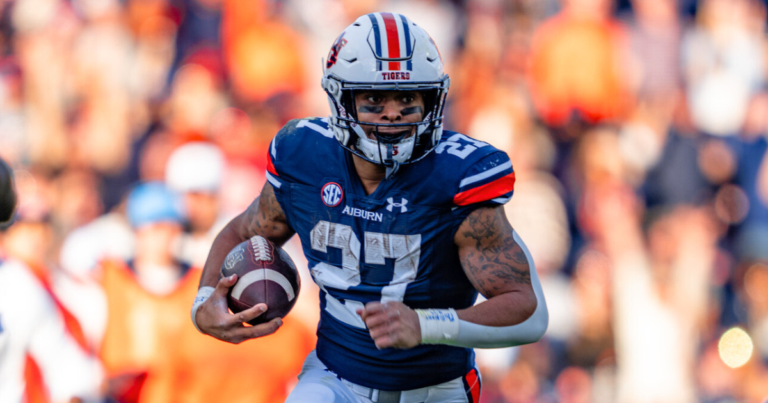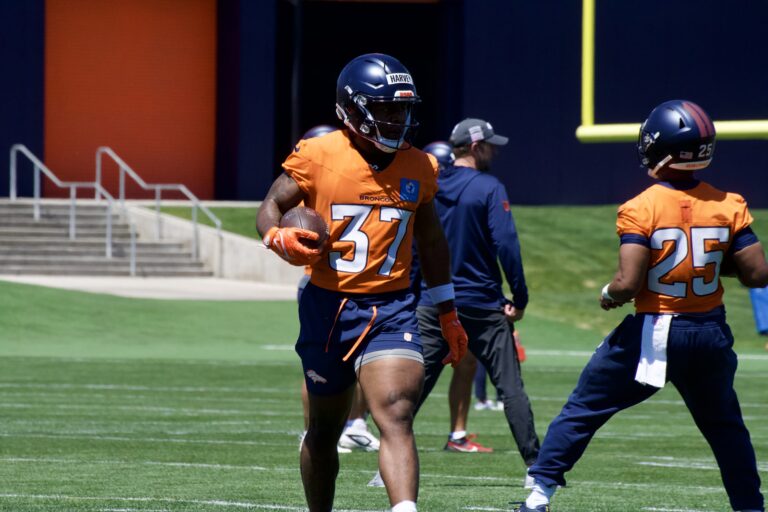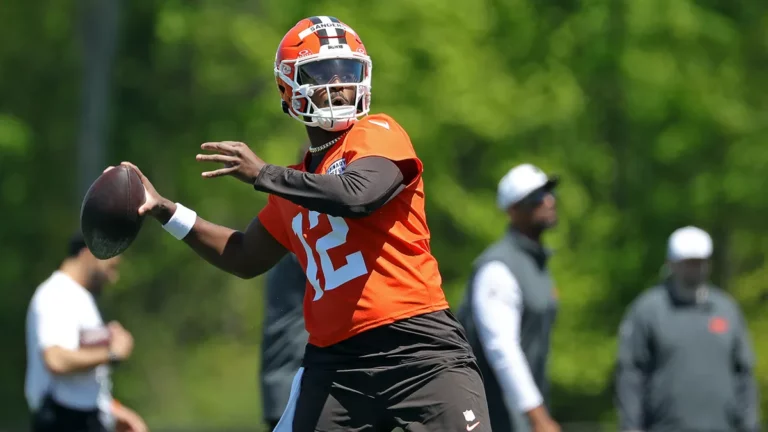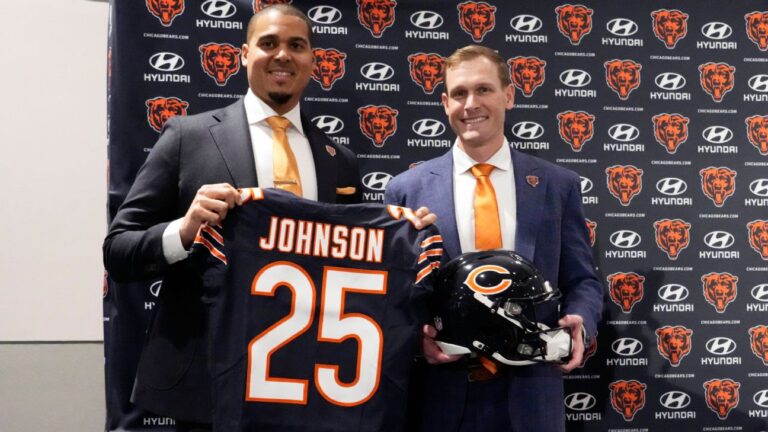One of the most polarizing topics in 2020 fantasy football is the position of running back and when to draft them. With 21 of them currently going in the first three rounds, it’s more critical than ever to make the right moves at this key foundational position. While the Average Draft Position (ADP) numbers indicate 2020 is the year of the RB-RB start tactic (our own Wolf goes as far as RB-RB-RB), there are plenty of fantasy websites out there selling this as the best year to roll out the zero-RB strategy.
Personally, I have always been a fan of the modified zero-RB start in which you grab a bell-cow RB in Round 1 and then wait on taking your RB2 until after round five or round six. No matter which way you slice it, nailing your bell-cow backs is the most important factor on whether you are standing on the podium lifting the trophy at the end of the season or participating in your league’s Toilet Bowl.
Why Nailing the RB Spot is Crucial
Using RotoViz’s Best Ball Win Rate Explorer, I have put together a chart showing the top 25 players with the highest win rate from the past 5 seasons. I am using the Best Ball format (based on FanBall’s BestBall10s) for data here because it helps highlight the raw importance of player selection as there are no variables relating to start/sit decisions, trades, late-season waiver adds, etc.
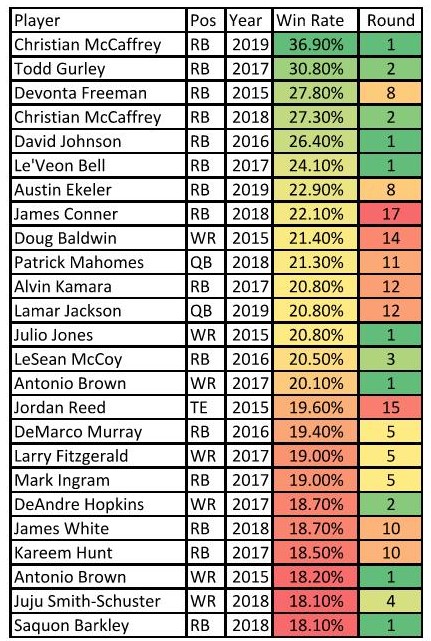
The first eight names on this list are all RBs and with the exception of the infamous 2015 Devonta Freeman season they are all 1st and 2nd round fantasy draft picks. In total, 15 RBs (60 percent) are included here compared to seven WRs (28 percent), two QBs (8 percent), and one TE (4 percent). So we have confirmed our theory that RBs are extremely important to winning in Fantasy Football (although that really wasn’t up for much discussion), but how do we go about figuring which RBs are going to land in the Top Tier?
How to Evaluate the Bell-Cow Backs
Volume is king for RBs and there are numerous correlation matrices out there highlighting the “sticky” stats from season-to-season. I am not going to dive too far into these (as there are far smarter people who have done that already) but I do think it is important to provide context for how the Top 21 backs performed in 2019 compared to their peers. The matrix below includes some relatively easy-to-grasp statistics which have proved to have a high correlation to PPR in Year N+1, and for those of you wondering, Dominator Rating is simply put the percentage of yards and touchdowns that a player accounts for on their own team.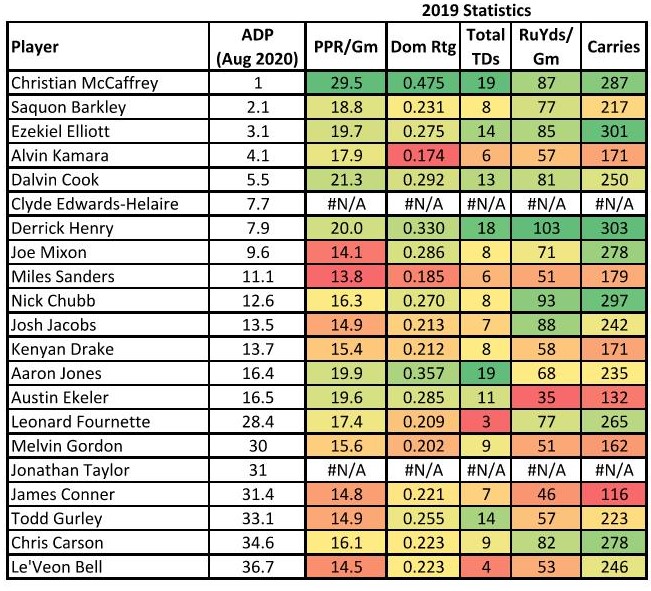
This chart is a good way to compare how the top guys did last season, but as you can see, once you get past the top five, it starts to get a little murky. All that means is it’s time to dive deeper!
I created a tool to help sort through the projected backfields for every team and it uses a few more advanced metrics to help us identify and smash the bell-cow candidates, but then also to stay away from potential landmines ready to destroy your early-round draft capital.
Introducing the Backfield Comparison Tool
If you are looking for groundbreaking information about any of the five consensus studs, this article will probably disappoint you. I will use these first five backfields to help describe the tool, highlight some of the analysts I leaned on to create it, and really reinforce why these five guys are the true studs for 2020.
Before we dive in, I want to mention that the draft slot that I have the players listed in reflects my current rankings and would be the “earliest” that I feel comfortable taking these bell-cows.

1.01 – Christian McCaffrey
Here’s a guy who truly “checks all the boxes” and I am completely dumbfounded when I see a person skip out on McCaffrey at 1.01. In case you need a refresher on how good McCaffrey’s 2019 season was, if you took only his rushing stats he would have finished as the RB12 and if you took only his receiving stats he would have finished as the RB11. Obviously, when you combine these two “players,” you get a guy who finished with 29.5 PPG and outscored the RB2 by more than 150 pts.

1.02 – Saquon Barkley
JJ Zachariason has done a masterful job at helping define breakout players, and in his RB article from last month, he discussed how big of an impact receiving has on RB scoring, specifically target share and rush-to-target ratio. In this tool, I have included a column for “Projected Workload” which brings in these two stats (except it replaces targets with proj. receptions). Barkley has an elite level projected receiving share this year (19.6%) and figures to be in the Top 5 of RBs. In addition, his projected rush-to-reception ratio is right at the threshold of 4 which is desired for an RB of his caliber.

1.03 – Alvin Kamara
This may be a slight surprise here as the ADP shows Kamara is currently trending as the RB4, however when you look at the numbers it is easy to remember the 2017 breakout year he had. Despite having a down year in 2019 (if you consider an RB9 finish to be disappointing), Kamara was a poster child for a couple of lesser-known stats that were introduced by Ben Gretch. High-value touches (HVT) are defined as rush attempts inside the 10-yard line + receptions and they are the opposite of the touches that make up a player’s trivial rush attempt percentage (TRAP). In 2019, Kamara was able to pull off the elite double feat of high HVT and low TRAP, which is why I am high on his upside this year as the third RB off the board.

1.04 – Ezekiel Elliott
Having missed a grand total of 8 games in his first 4 seasons (6 due to suspension and 2 due to Week 17 rest), Elliott is the model of consistency and the Cowboys seem to agree after making him the second-highest-paid RB last summer. One of the reasons that Zeke has finished as the RB2, RB12, RB5, and RB3 to start his career is his pass-catching ability (3.4 rec/game) and his propensity to fall into the endzone (40 career rushing TDs).
Pat Kerrane introduced a concept called the 745 rule recently, which helps to look at green zone rush attempts (inside the 10-yard line) and receptions, both from a slightly different perspective. Elliott easily projects to cross over the 7 rush TD and 45 reception thresholds this season, as do all five of the other stud RBs, but this rule will be a good one to remember as we start to get a little bit deeper into the draft.

1.05 – Dalvin Cook
The final piece of this tool relates to efficiency, and Fantasy Points Over Expectation (FPOE) has gained popularity in recent years as a good way to measure this. Jack Miller has broken down the intricacies of FPOE in a series of articles this summer for RotoViz, but one thing that is clear is that receiving efficiency matters more than rushing (starting to sense a trend here?). Cook ranked 9th in reFPOE and 5th in ruFPOE last season. Seeing this level of dual-threat efficiency is rare from the workhorse backs (McCaffrey is the only other player who was top nine in both). With the potential for a holdout looming, Cook has seen a big ADP drop recently, so you should have the opportunity to pick him up towards the end of Round 1.
Alright that was the easy part, but hopefully it helped reinforce why the decision should be a no-brainer to take an RB if you have any of the first five picks in the draft. Now let’s dig into some of the more polarizing RB1 options.
Bell-Cow RBs You Need to Target

1.07 – Clyde Edwards-Helaire
Talk about a rocketship, CEH has been one of the most fascinating stories of the offseason. Prior to the Damien Williams opt-out, the rookie from LSU already had targeted first-round draft capital spent on him from the most explosive offense in football, he had a large projected receiving role and a clear-cut pathway to a bell-cow role by the end of the season.
With Williams now off the roster for 2020, the CEH hype train has officially left the station. His rush-to-reception ratio projects to be elite, he clears every bar for the 745 rule, and he is one of the most exciting rookie prospects for a long time.
The only word of caution I would have is be sure to not “double count” on this guy as we get closer to the season kicking off. You are sure to see some articles from beat reporters about how he has really stepped into the lead role in KC, and there is bound to be a viral video or two come across Twitter showcasing his athleticism. Just remember that these are all things that we expect from him. Don’t let the hype around the rookie move him up your rankings past the five studs, but boy-oh-boy feel free to load up on him if you get a middle round draft pick.
Note: Our Wolf has Helaire ranked all the way at 4, as he believes his “745” TD Projections are far too low, slotting Helaire in for 14 TDs.

1.10 – Miles Sanders
Sanders is a player that appears to have entered the “elite” conversation this offseason but is also viewed as having a wide range of outcomes in other parts of the fantasy community. As such, he is being selected anywhere from the mid-first round all the way to the late-second round in drafts.
After breaking out in the latter half of his rookie season, he now enters his sophomore campaign as the clear lead back in the Philadelphia offense. In the games that Jordan Howard missed last season, Sanders’ receptions increased by more than 1.5 per game and he averaged close to 17.5 PPG.
If you miss out on the rising sophomore, or if you are scared of Doug Pederson’s commitment issues, there are not many better RB2 options in the league than Boston Scott. There is an extremely small group of players going after Round 10 that check as many boxes of the backfield comparison tool as Scott. He continues to be a backup RB target for me.

2.01 – Kenyan Drake
Kliff Kingsbury’s Arizona Cardinals offense has been the topic of many discussions this offseason, and if you can crack the code on their passing vs rushing tendencies there will be a lot of winning fantasy football teams under your belt.
One thing for certain is that what Kenyan Drake did after being traded to the Cardinals in Week 9 last season is flat out impressive (19.7 PPG). When you consider that his above-average HVT and TRAP numbers include 7 weeks of data from his time on a Miami Dolphins team that managed to score only 77 points in that same period, the arrow is clearly pointing upward for Drake this season.

2.04 – Austin Ekeler
Ekeler was the player responsible for the 2nd highest best ball win rate last season (Behind only CMC), and somehow this year, when there are few questions regarding his backfield role, he is still being taken as the 14th RB off the board.
There are very few guys on this list that have the number of green boxes in this backfield tool that Ekeler has, yet there remains a sense of uncertainty around him because of the departure of Philip Rivers. I love me some uncertainty in the fantasy football world because it opens the door for opportunity.
In 2017, Tyrod Taylor’s last season as the starting QB for the Bills, he managed to complete 96 passes to RBs, which may not sound like a lot but when you add in that this accounted for 36.5% of his completions, it shows that Ekeler’s receiving numbers from last year can still be maintainable with Taylor behind center.
I am all the way in on Ekeler this year and in draft’s where I am somehow pulling off pairing him with one of the Top 5 guys, I have basically set my RB position on cruise control for the season. Wolf agrees, with Ekeler ranked No.8 overall on his Big Board.
Any time I see Austin Ekeler Round 2 it’s the easiest smash button. Only CMac outscored him while Gordon was holding out.
His RB13 price is his absolute floor, and it comes with a very plausible Top-5 ceiling https://t.co/rKiTWuv0Dx
— Wolf of Roto Street (@RotoStreetWolf) August 28, 2020

2.06 – Aaron Jones
This may be viewed as a risky pick for a guy who plays on a Green Bay Packers team who suddenly seems to be confused at their own short and long-term plans. Due to the Packers interesting offseason moves, you will find Jones oftentimes falling below his current ADP. When you feel a sense of uneasiness in the draft room, that signifies a time to pounce.
While I don’t like the idea of Jones in a dynasty format, I really love him for the 2020 season. As we saw in multiple times last year, the Packers were eager to get Jones more involved in the passing game, and in games where Jamaal Williams missed Jones’ receptions bumped up to 4.5 per game.
I think we can expect that Williams takes a backseat to rookie AJ Dillon, which should open up even more opportunities for Jones in the passing game. Don’t fear the perceived “TD regression,” the Packers still do not have a lot of weapons. The TDs will gravitate toward the talented guys.

3.01 – James Conner
The Pittsburgh Steelers were an all-around disaster last season and James Conner only played 10 games (including just one 1.5 with a competent quarterback). His efficiency numbers were still really good in an offense that ranked dead last in the NFL in Offensive DVOA and if you take just 80 percent of what Jaylen Samuels and Benny Snell were able to combine for in games that Conner missed you have a 3.6rec – 24reyds – 79ruyds – 15.5PPR line. That’s really good production for two guys who just aren’t that good at football.
Insert Conner back in with a healthy Ben Roethlisberger and add a motivated Steelers team ready to prove that they can challenge for the AFC North title again, and I am all over the fourth-year back. It’s a shame that people are starting to get on board with this narrative as Conner is consistently going in the third round of drafts now, whereas earlier in the summer he was available into the fifth round!

3.04 – Leonard Fournette
Note: This was written prior to the Jaguars cutting Fournette
When the Jaguars declined to pick up Fournette’s fifth-year option in May of this year, that immediately raised some red flags. People quickly questioned where his commitment level would be this season and there were also concerns of a holdout. Well that was back in May people, and here we are two weeks away from the start of the regular season and we haven’t heard a peep out of Jacksonville regarding Fournette.
Yet his ADP continues to fall! I am extremely baffled why the player who finished as the RB7 last season is now being drafted as the 15th RB off the board. Take a look at the numbers above, couple that with the fact that the stud out of LSU finished the season with 3 total TDs (yet still had 261 points in PPR leagues!), and we have all the makings of a 2020 league winner on our hands. I must regretfully inform you all, as you will see in my result chart below, that I am extremely empty on Fournette shares so far, but I assure you as I have continued to see his ADP fall I will be moving him up my default rankings and targeting him in drafts over these last few weeks.

3.08 – Chris Carson
While “Let Russ Cook” has been one of the bigger mantras of the offseason, and Seattle boasts one of the most elite wide receiver tandems in the league, let’s not forget about Pete Carroll and his affinity for running the football.
Seattle ranked sixth in 2019 and eighth in 2018 in first half rushing success rate, so I don’t think Seattle will be abandoning the run too quickly. Carlos Hyde and Rashaad Penny have both accounted for Chris Carson’s ADP drop into the late third round, but I do not see either of these guys as viable options unless Carson were to go down. No matter how much we root for Wilson to open it up and sling the rock, there is no doubt that the high-value goal line touches will still be extremely prevalent for their lead RB bell-cow.

3.12 – Le’Veon Bell
It’s interesting to note here that Le’Veon Bell is the RB21 by ADP on this list from the first three rounds, however he is the only player (outside of CMC and Saquon) whose backups are essentially going undrafted.
That doesn’t seem to add up.
While I am not extremely excited about much of what the Jets have going on this year offensively, it’s hard to overlook the 311 touches that Bell had last season (eighth in the league) and he commanded 72.3 percent of the backfield touches. If you are willing to buy-in that he will outperform his career-low output in every major category last season, then Bell is a viable RB2 option with true workhorse potential at the end of Round 3.
Wolf Note: With reports that Gore has been splitting work almost evenly with Bell, who also continues to openly feud with the staff over his workload and health, Gase seems likely to “Gase” Bell’s value away again in 2020. He’s on The Wolf’s “Do Not Draft” list.
The 7 Bellcow RBs to Avoid in Rounds 1-3

Derrick Henry – Not much receiving upside coupled with an extremely high rushing efficiency last season makes the Tennessee RB a prime candidate to underperform this season. I am extremely low on all portions of the Titans offense this year and most often pass on Henry in the middle of the first round.
Wolf Note: Although I agree with Jon’s process in identifying bell-cows by prioritizing receiving, Henry is the one exception to the rule. This offense is so Henry-centric, and the departure of Dion Lewis could unlock some underrated receiving upside:
Derrick Henry: Rarely ranked Top-5. Popular 1st Round Fade. Why?
In PPR, w/ Tannehill, Henry's 23 FPPG = RB2, behind only CMac. That's w/ minimal rec.
"We've seen the ceiling."
Have we? Lewis gone. Henry has avg'ed 10.1 YPRec. If his 1.6 tgts per game bump to even 3 or 4? 🚀 pic.twitter.com/szjThje3fU
— Wolf of Roto Street (@RotoStreetWolf) August 25, 2020

Joe Mixon – If the Bengals had a full offseason work program to incorporate rookie phenom Joe Burrow into the still-evolving offense under Zac Taylor, I would be much more attracted to Mixon. With the questions around continuity and how quickly Cincinnati will be able to get out of the gates coupled with some of the bell-cow back options being selected a few picks after Mixon, I am almost always taking Davante Adams in the 1.08 or 1.09 spot instead of the Cincy RB.

Nick Chubb – Two words here: Kareem Hunt. I absolutely love Hunt this season and he is a priority target for me in the fifth round. Chubb already isn’t much of a factor in the passing game and his TRAP numbers are extremely concerning from last season. Don’t let the 70-plus yard touchdown runs that you remember about Chubb persuade you into taking him at the end of the first round.

Josh Jacobs – If you listen to some of the reports coming out of Raiders camp, Las Vegas may be the first team in NFL history which starts 4 WR, 2 TE, and 3 RBs every week who are fantasy relevant. All joking aside, I appreciate the willingness form Jacobs to increase his receiving capacity but at the end of the day, Jalen Richard, Devontae Booker, Theo Riddick, and even the rookie Lynn Bowden are going to eat away at some of those high value touches from Jacobs. I am pretty out on most things Raiders this season.

Melvin Gordon – I want to love MG3 this season, and I have tried talking myself into him as much as possible, but I just can’t get there. Similar to the Raiders, the Broncos have a lot of weapons and in a year with virtually no offseason I don’t think we can waste the early weeks letting this offense figure itself out.

Jonathan Taylor – In dynasty, Taylor is my No. 1 target and I have managed to get him in three different startup drafts. His measurables are elite and he consistently faced stacked boxes at Wisconsin where he still set the bar for tons of NCAA rushing records, however the Colts offense has continuity questions coming into the season and I am not willing to use a third-round redraft pick on him. He may end up outperforming CEH this season and I will regret it, but it’s a risk I am willing to take.

Todd Gurley – I don’t buy into Gurley’s knee being healthy and until I see him prove it on the field I am staying away. He has been a polarizing guy this offseason, but I am simply staying away until he proves it. I would rather take the risk on Fournette or Bell in this range.
Prove it To ME!
I would be remiss if I ended this article without proving to you that I believe in my rankings for the bell-cow RBs. So far this summer, I have drafted over 100 different best ball leagues and I have included my exposure of these guys below.
Now obviously some luck is involved with getting one of the top five picks (so far I am way better at getting the 1.01 than the 1.02), but I am continually passing on the guys listed towards the bottom of my article and am making a concentrated effort to grab the 14 bell-cows that I broke down in detail.
For those curious, I also included my top-seven exposures for some of the later round guys. Thanks for reading (if you made it this far), and I hope this helps provide you some structure for how to attack the bellcow RBs in the early rounds. Good luck this season!
